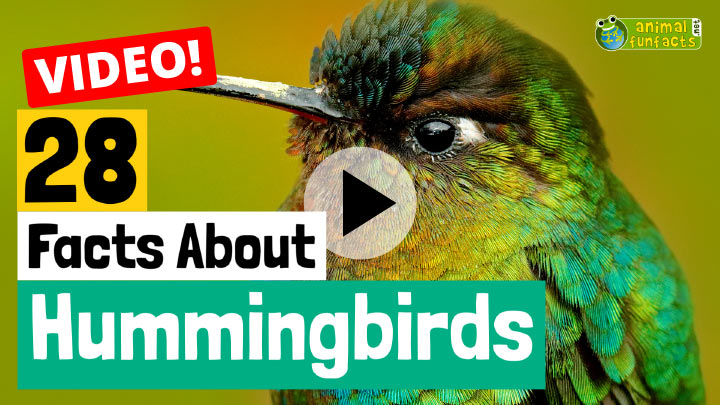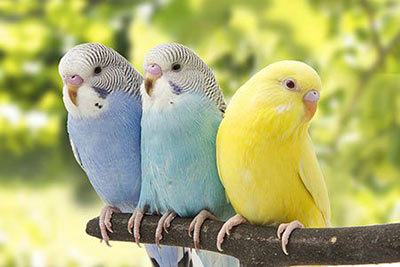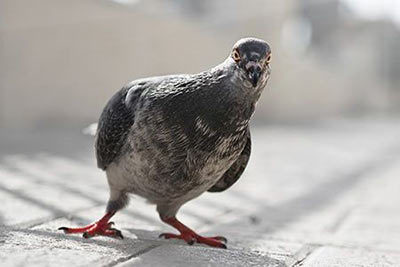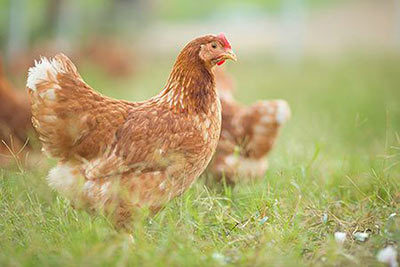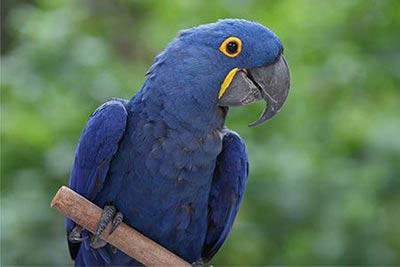Hummingbird
Hummingbird Facts
| Size | 2-10 in (5-25 cm); 3.5-8.5 in (9–21.5 cm) (wingspan) |
| Speed | Up to 30 mph (48 km/h) |
| Weight | 0.05-0.8 oz (1.6-24 g) |
| Lifespan | 3-5 years |
| Food | Nectar, tree sap, insects, spiders |
| Predators | Birds, snakes, lizards |
| Habitat | America |
| Order | Apodiformes |
| Family | Hummingbirds |
| Scientific name | Trochilidae |
| Characteristics | Long, thin bill, can fly backwards |
Main Characteristics
Hummingbirds are small birds with a very exeptional, unique ability: they can fly backwards.
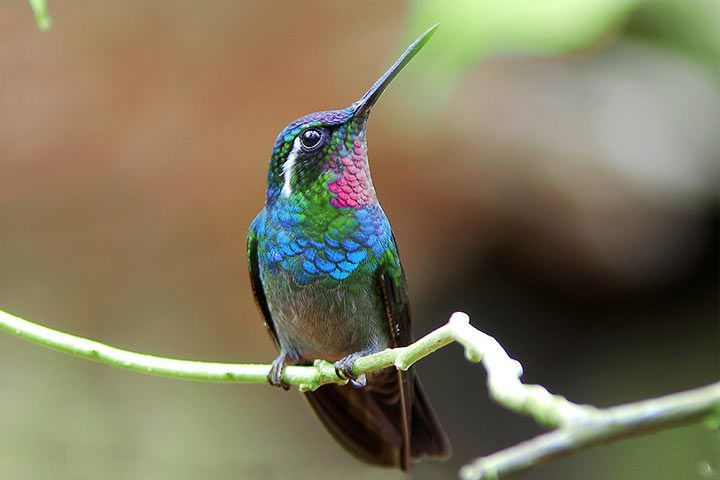
Anatomy and Appearance
Size and Weight
The smallest hummingbird is the bee hummingbird. From the bill to the tail feather it measures just about 2.3 inches (6 cm). Therefore it is not much larger than a USB stick. The largest hummingbird is the giant hummingbird with a length of 10 inch (25 cm).
Plumage
The bright plumage of most hummingbirds has a dazzling, metallic gleam. Depending on the incidence of light, the feathers glimmer in slightly different color shades. This is called light interference (= the overlapping of light waves). You can watch the effect when drops of oil spread on a water surface, or when light falls on a CD in a specific angle so that you can perceive the colorful gleam.
Beak
The hummingbird with the longest beak is is the sword-billed hummingbird that lives in the Andes from Venezuela to Bolivia. Its beak grows to over 4 inches (10 cm) long, which is longer than its body!
The Smallest Bird Egg
Of all the birds in the world, the vervain hummingbird lays the smallest eggs. In 1998, the Guinness Book of World Records officially confirmed that a vervain hummingbird laid two eggs that were less than 0.4 inches (10 mm) long and "weighed" 0.0128 ounces (0.365 grams) and 0.0132 ounces (0.375 grams). And the biggest bird eggs? The ostrich lays the biggest eggs, of course.
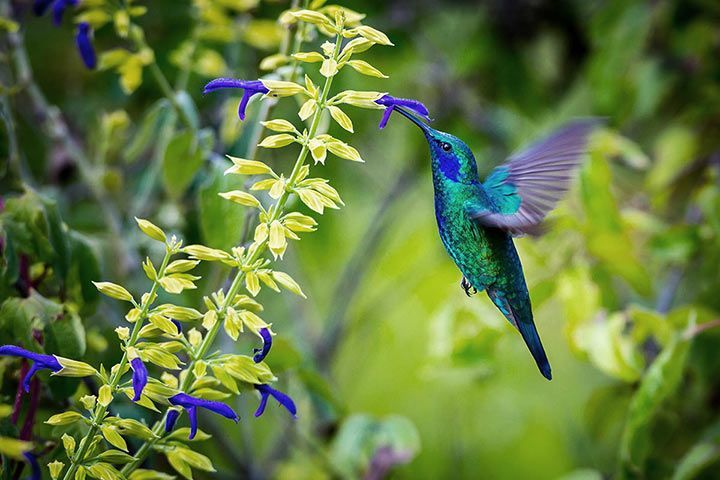
Abilities and Senses
Hovering Flight
Hummingbirds can’t just fly “on the spot”, but sideways and backwards too. How do they do it? They are masters of hovering flight. They rotate their wings quickly in a figure 8. This can also be seen in insects such as bees, hoverflies, dragonflies and hummingbird hawk-moths (insects that look like mini hummingbirds!). There are other tropical birds that can hover for a short while but only hummingbirds can keep flying like this for so long and master hovering flight so perfectly.
Eat While Flying
Some people eat while walking, the hummingbird almost exclusively eats while flying. While hovering in the air, it drinks from the calyx of a flower. With its long, needle-like bill it gets deep into a flower. It looks like the hummingbird uses its bill like a drinking straw to suck up the nectar.
In fact, the hummingbird sticks out its tongue and dips it into the nectar. This happens very quickly, about 15-20 times per second. Every time a little bit of nectar becomes trapped within the tongue and when the bird rectracts its tongue the nectar is drawn up. The tongue acts like a tiny pump.
Adaption to the Cold
How can a little bird like the hummingbird withstand cold temperatures? It uses a trick: When it is getting cold during the night, it slows down its metabolism, which helps it to maintain an even body temperature. It enters a so called state of torpor. More infos on that in our broad-tailed hummingbird profile.
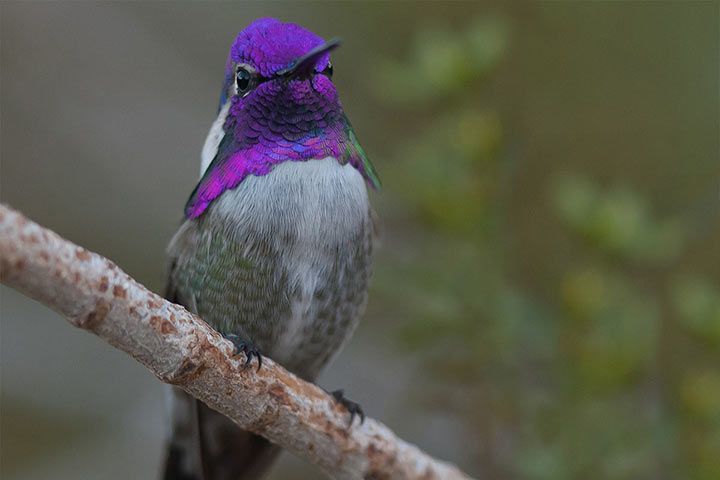
Behavior
They Drink Five Times as Much as Their Body Weight
They slobber five times the weight of their bodies of the sweet “fuel” every day. Fortunately their kidneys work very well. Other animals would die if they tried to drink that much. Their kidneys would not be able to process such large amounts of liquid at once.
Why Do They Need So Much Food?
Hummingbirds flap their wings so fast that we cannot see them anymore. This is very exhausting and energy-consuming. Therefore, hummingbirds have to take in large amounts of sugar with the nectar they drink from flowers (the nectar consists of 30% sugar and 70% water).
Video: 28 Facts About Hummingbirds
(Video opens on YouTube)















